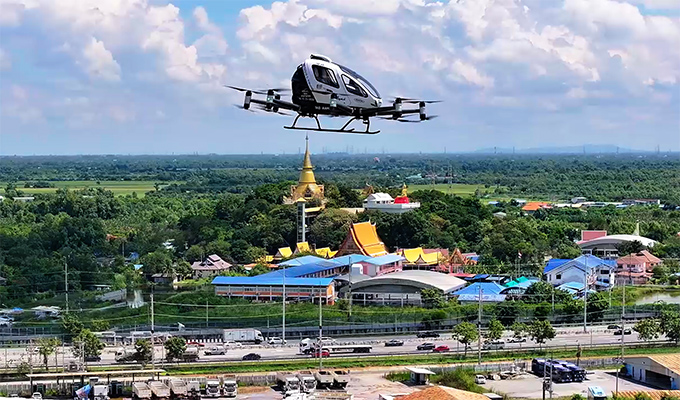While domestic airspace opens in stages, Chinese firms are probing overseas skies for opportunities.
Several companies told CNA they have fielded enquiries from Indonesia for cross-coastal hops moving people and goods.
The market is promising but thin: industry data shows Indonesia accounts for about 4 per cent of Asia Pacific’s helicopter fleet, highlighting both potential and readiness gaps.
Asha Wadya Saelan, founder of the Indonesian Unmanned System & Technology Association and chief operating officer of BETA-UAS, which develops and manufactures unmanned aerial vehicles, said the route to exports starts conservatively.
“Exports make sense in phases. Trials and cargo come first. Passenger service follows once Indonesia validates certificates and the ground ecosystem is ready,” he told CNA.
Indonesia’s framework already allows special authorisations for pilots while operators build experience. “Success depends on certification alignment, operator readiness, and integration of unmanned traffic management with traditional air control,” he said.
In Thailand, EHang has launched an Advanced Air Mobility (AAM) “sandbox” with the Civil Aviation Authority and local partners – a pilot zone for a new generation of air transport systems that use electric or hybrid-electric aircraft.

The trials are running in Bangkok, with plans to extend to Pattaya, Koh Larn, Phuket and Koh Samui.
According to the company, these overseas pilots mirror its cautious rollout at home: markets need real operating data before daily services can follow. As one executive put it to CNA, the goal is to fly under supervision, gather evidence and earn confidence.
Analysts said the overseas turn is not just about sales. As Xu from NexAvian noted, introducing a new vehicle category demands local learning: weather, maintenance capacity and public acceptance.
For Chinese firms, early Southeast Asian routes double as living laboratories – places to refine procedures, train crews and align certificates – while China’s “carrying goods, scenic site first” approach plays out at home.
Singapore has been playing a coordinating role in shaping Asia’s rulebook for air taxis and drones.
The Civil Aviation Authority of Singapore (CAAS) first mooted a set of shared guidelines in November 2023. Subsequently, the reference materials were jointly developed by CAAS and 23 regional counterparts and adopted in July this year.
“The group will also submit the reference materials to the International Civil Aviation Organization for reference for global adoption,” CAAS said in a statement on Jul 17.
At the same time, low-altitude forays in Singapore have faced turbulence.
In 2023, German company Volocopter postponed its air taxi launch at the Marina Bay area due to funding shortfalls.
The firm eventually filed for insolvency in December 2024 before being subsequently reorganised under Diamond Aircraft Group Austria, part of China’s Wanfeng Auto Holding Group.
Xu noted that under such an asset deal, previous agreements lapse unless re-signed, meaning Singapore may need a new partner to restart air taxi trials.
Still, Singapore’s strong institutions and strategic location make it a natural testbed for the emerging sector, according to Xu.
AAM and the low-altitude economy are expected to feature prominently at the Singapore Airshow in 2026.
https://www.channelnewsasia.com/east-asia/china-low-altitude-economy-air-taxi-drones-policy-regulations-5419456